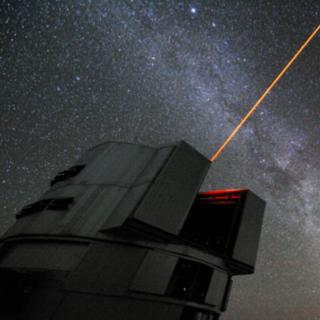Bibcode
Everall, Andrew; Belokurov, Vasily; Evans, N. Wyn; Boubert, Douglas; Grand, Robert J. J.
Referencia bibliográfica
Monthly Notices of the Royal Astronomical Society
Fecha de publicación:
4
2022
Número de citas
16
Número de citas referidas
15
Descripción
We use Gaia photometry and astrometry to estimate the vertical spatial structure of the Milky Way at the Solar radius, formally accounting for sample incompleteness (the selection function) and parallax measurement uncertainty. Our results show impressive precision demonstrating the power of the Gaia data. However, systematic errors dominate the parameter value uncertainties. We thoroughly test and quantify the impacts of all systematic uncertainties. The vertical tracer density is modelled as a sum of two exponential profiles for the thin and thick discs, together with a spherically symmetric power law for the stellar halo. We constrain the thin disc scale height as ${h_\mathrm{Tn}=260 \pm 3\, (\mathrm{stat}) \pm 26\, \mathrm{pc}\, (\mathrm{sys})}$ and thick disc ${h_\mathrm{Tk}=693 \pm 7 \, (\mathrm{stat}) \pm 121\, \mathrm{pc}\, (\mathrm{sys})}$. For the halo, we obtain a power-law profile with $n_\mathrm{H}=3.543\pm 0.023 \, (\mathrm{stat}) \pm 0.259\, (\mathrm{sys})$. We infer a local stellar mass density for non-compact object stars of ${\rho _\mathrm{local}^{*} = 3.66\pm 0.03\, (\mathrm{stat})\pm 0.52 \times 10^{-2}\, \mathrm{M}_\odot \, \mathrm{pc}^{-3}\, (\mathrm{sys})}$ and surface density of ${\Sigma _\mathrm{local}^{*} = 23.17\pm 0.08\, (\mathrm{stat})\pm 2.43\, \mathrm{M}_\odot \, \mathrm{pc}^{-2}\, (\mathrm{sys})}$. We find asymmetries above and below the disc with longer disc scale heights in the north but a flatter halo in the south at the ≲ 10 per cent level.
Proyectos relacionados

Evolución Galáctica en el Grupo Local
La formación y evolución de galaxias es un problema fundamental en Astrofísica. Su estudio requiere “viajar atrás en el tiempo”, para lo cual hay dos enfoques complementarios. El mas extendido consiste en analizar las propiedades de las galaxias a diferentes distancias cosmológicas. Nuestro equipo se concentra en el otro enfoque, denominado
Emma
Fernández Alvar